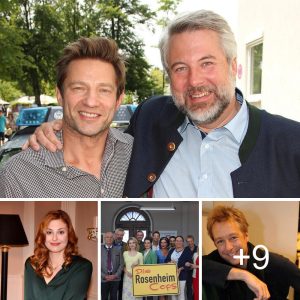**Spoiler Alert: Die Rosenheim-Cops – A Look Back and a Glimpse Ahead**
Twenty-four years ago, the Rosenheim-Cops were a cornerstone of Bavarian television, dominating schedules and consuming significant chunks of viewer time. Their investigations, while always charmingly quirky and steeped in local color, were sprawling affairs, often taking up an entire episode to unravel even seemingly simple cases. The leisurely pace, the emphasis on building relationships between the characters, the detailed portrayal of Rosenheim itself – all contributed to a long-form narrative style that reflected a different television landscape. Remember those extended coffee breaks at the commissariat, the seemingly endless car chases through picturesque alpine villages, and the meticulous reconstruction of crime scenes that felt almost ritualistic? Those were the hallmarks of the earlier seasons, the era where solving a case was a marathon, not a sprint.
The new “Die Rosenheim-Cops,” however, operate under a significantly different paradigm, reflecting the changes in the modern television viewing habits. While the charm and Bavarian setting remain central, the pacing is undeniably faster. The overarching message of “Anders als noch vor 24 Jahren nehmen die “Rosenheim-Cops” mittlerweile weniger Zeit in ihrem Kalender ein” (“Unlike 24 years ago, the Rosenheim-Cops now take up less time on their calendar”) signals a dramatic shift in the show’s narrative structure.
This isn’t simply a matter of shorter episodes. The core difference lies in how the storylines are crafted. Instead of focusing on one protracted investigation per episode, many modern episodes intertwine multiple cases, or even solve several smaller mysteries within a single, condensed timeframe. The classic, painstakingly detailed investigation, the lengthy interrogations that peeled back layers of deception, are condensed. Think of it as a shift from a detailed landscape painting to a series of vibrant, concise sketches. The focus is now on efficiency and plot progression. While character development is still present, it’s interwoven more tightly with the unfolding mysteries, rather than being the central focus.

The supporting characters, once given ample screen time to flesh out their individual stories and relationships, now appear more sparingly, their appearances often directly related to the case at hand. Even the beloved, eccentric characters of Rosenheim, once given ample room to meander through their daily routines, are seen interacting with the central plot more directly. The overall effect is a tighter, more streamlined narrative. The leisurely, almost contemplative atmosphere of the early seasons is gone, replaced by a brisk, almost procedural feel.
This isn’t necessarily a negative change. The modern “Rosenheim-Cops” still deliver the same quirky charm and engaging mysteries. However, it is a significant departure. Long-time fans might find themselves missing the slower pace, the in-depth character studies, and the leisurely unfolding of the mysteries. The shift reflects a broader change in television production, prioritizing quicker narratives and a wider range of story arcs within a shorter time frame. The essence of “Die Rosenheim-Cops” endures – the humor, the setting, the core cast – but its approach to storytelling has fundamentally altered, fitting into the demands of a rapidly evolving television landscape.